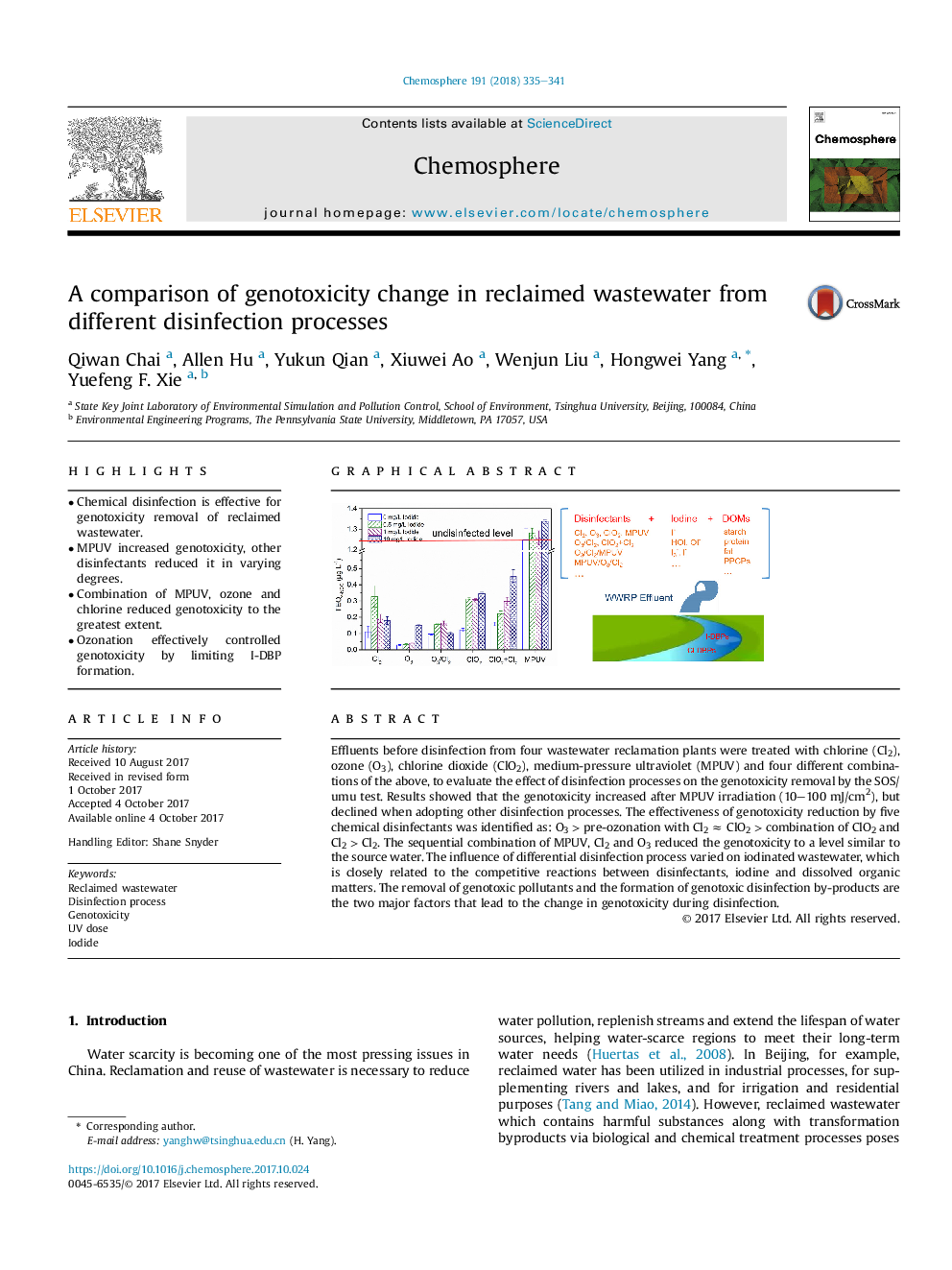| کد مقاله | کد نشریه | سال انتشار | مقاله انگلیسی | نسخه تمام متن |
|---|---|---|---|---|
| 5745734 | 1618780 | 2018 | 7 صفحه PDF | دانلود رایگان |
- Chemical disinfection is effective for genotoxicity removal of reclaimed wastewater.
- MPUV increased genotoxicity, other disinfectants reduced it in varying degrees.
- Combination of MPUV, ozone and chlorine reduced genotoxicity to the greatest extent.
- Ozonation effectively controlled genotoxicity by limiting I-DBP formation.
Effluents before disinfection from four wastewater reclamation plants were treated with chlorine (Cl2), ozone (O3), chlorine dioxide (ClO2), medium-pressure ultraviolet (MPUV) and four different combinations of the above, to evaluate the effect of disinfection processes on the genotoxicity removal by the SOS/umu test. Results showed that the genotoxicity increased after MPUV irradiation (10-100 mJ/cm2), but declined when adopting other disinfection processes. The effectiveness of genotoxicity reduction by five chemical disinfectants was identified as: O3 > pre-ozonation with Cl2 â ClO2 > combination of ClO2 and Cl2 > Cl2. The sequential combination of MPUV, Cl2 and O3 reduced the genotoxicity to a level similar to the source water. The influence of differential disinfection process varied on iodinated wastewater, which is closely related to the competitive reactions between disinfectants, iodine and dissolved organic matters. The removal of genotoxic pollutants and the formation of genotoxic disinfection by-products are the two major factors that lead to the change in genotoxicity during disinfection.
490
Journal: Chemosphere - Volume 191, January 2018, Pages 335-341
